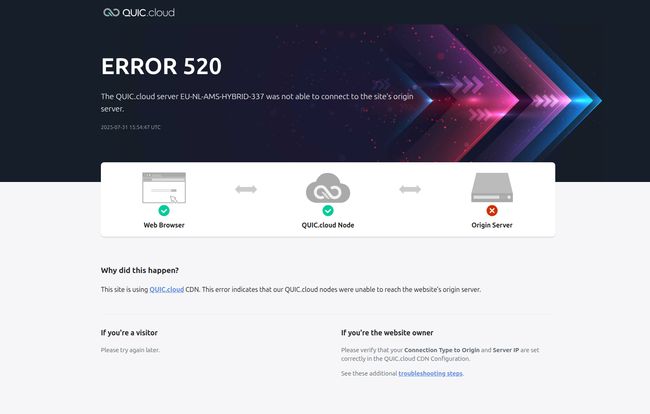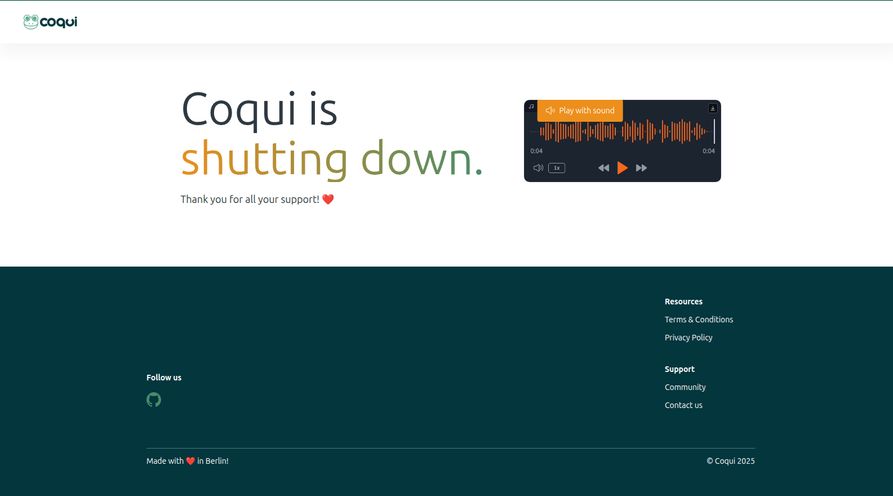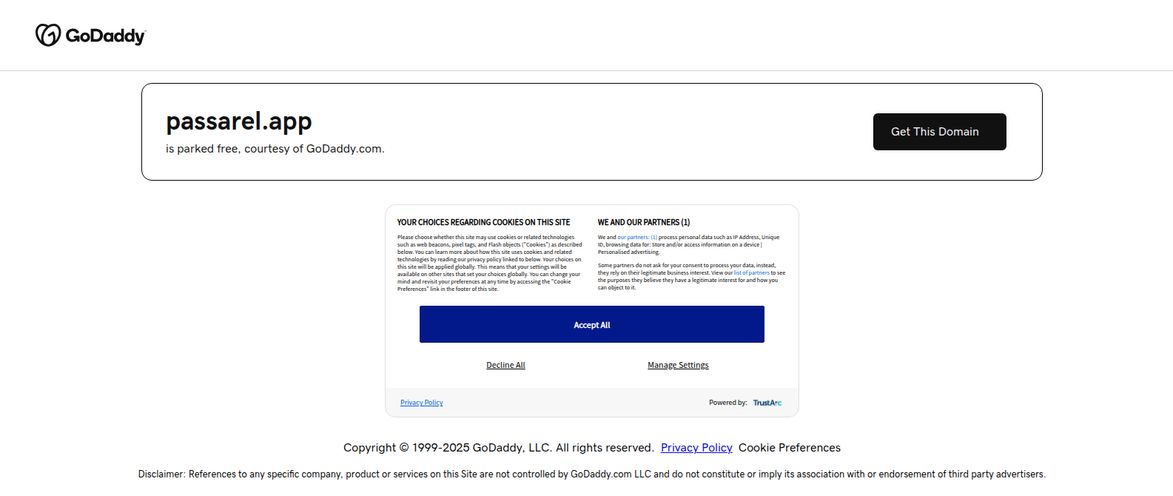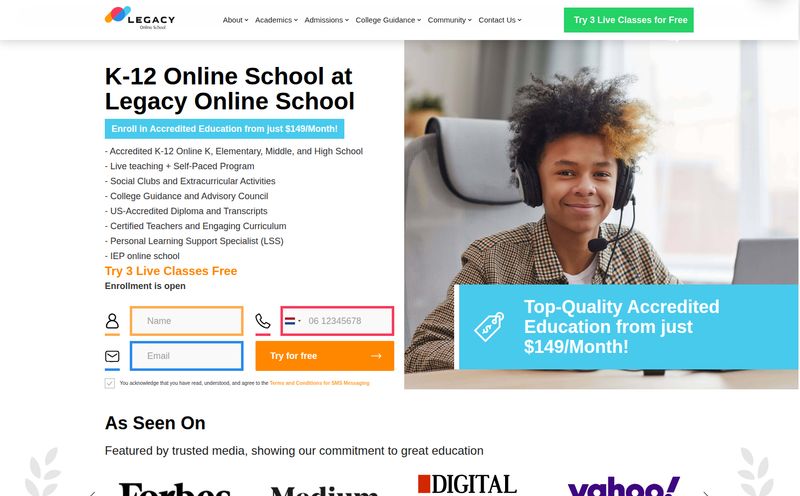As someone who’s been in the SEO and traffic game for years, I get excited by new tools. Genuinely. A new AI platform promising to slash my content creation time? Sign me up. I had my coffee brewed, my keyboard ready, and a tab open to check out this shiny new AI marketing copy generator. I was all set to write a glowing review, or maybe a spicy takedown, depending on how it performed.
And then… I hit a wall. A big, fat, ERROR 520 wall.
Yep. The site was down. The digital equivalent of showing up to a grand opening only to find a 'Sorry, we're closed' sign hanging crookedly on the door. It's a bit of a letdown, sure, but it's also a fantastic, real-world lesson. It’s a reminder that no matter how fancy the AI, the basic nuts and bolts of keeping a website online are still what matters most.
So, while I can't give you a hands-on review of this mystery tool today (we'll call it the 'Phantom Platform' for now), I can walk you through what it’s supposed to be, and we can chat about the bigger picture. Because this experience? It says a lot about the current state of AI tools.
What Was I Supposed to Be Looking At?
According to the whispers on the web, this platform is designed to be a content creator's little helper. The core promise is simple and seductive: it effortlessly whips up marketing copy, freeing you from the tyranny of the blinking cursor. We've all been there, right? Staring at a blank page, willing the perfect headline to appear. This tool claims to be the cure.
It’s not just about blog posts, either. The main draw is a suite of features that sounds pretty familiar if you’ve dabbled in AI content generation before, but with a few interesting quirks.

Visit AI Marketing Copy Generator
The Promised Land of Features
When you strip away the hype, any AI tool is only as good as its feature set. Here’s what the Phantom Platform was supposed to bring to the table.
More Than Just Words: Over 70 AI Templates
This is the bread and butter. Seventy templates is a solid number. I've seen platforms with more, and many with less. This suggests a tool that aims to be a jack-of-all-trades for marketers. You can probably expect templates for things like:
- Google Ad headlines
- Facebook post captions
- Product descriptions for e-commerce sites
- Blog post outlines and intros
- Email subject lines
The goal of these templates is to provide a structured starting point. You feed the AI a little context—your product name, a brief description, the tone you're going for—and it spits out options. It’s like having a junior copywriter on call 24/7. A very, very fast one.
Finding Its Voice with Text-to-Speech
This is a nice touch. A text-to-speech (TTS) function means you can turn any generated text into an audio file. Why is that cool? Well, for one, accessibility. It also opens up doors for quick content repurposing. You could generate a script for a short marketing video and immediately hear how it flows. Or maybe create a quick audio version of a blog post for people who prefer to listen. It's a smart feature that adds a layer of versatility.
The Built-in Brain: An AI Chatbot
The details here are a bit fuzzy, but the platform includes an AI chatbot. This could go one of two ways. It might be a conversational interface for generating content—instead of filling out a form, you just talk to the AI. "Hey, write me three fun Instagram captions for a picture of a dog drinking a puppuccino." Alternatively, it could be a support or brainstorming bot. I've used some AI chatbots that are great for bouncing ideas around. You can treat it like a creative partner to kickstart a brainstorming session.
Oh, and here's a weird little tidbit my research dug up: a mention of "BBVA Login." I have no earthly idea what a Spanish multinational financial services company has to do with an AI writer. A partnership? A weird bug in the system? Who knows. It’s one of those odd details that makes you go, "huh."
Let's Get Real: The Pros and Cons of AI Writers
Since we can't judge this specific tool, let's talk about its peers. Every AI writer I've ever used, from the big names like Jasper to the scrappy upstarts, comes with the same general set of trade-offs.
The big win, obviously, is speed. It’s an incredible time-saver. You can generate a dozen variations of an ad headline in the time it takes to think of two on your own. It's a fantastic weapon against writer's block and the sheer volume of content modern marketing demands. Seconds, not hours. That’s the dream.
But—and this is a big but—it's not a magic wand. The quality of the output can be all over the place. Sometimes it's brilliant, other times it’s generic, and occasionally it's just plain weird. You absolutely need a human in the driver's seat to edit, refine, and fact-check. Relying purely on AI can make your brand sound soulless and, frankly, a bit like everyone else. It can kill the unique spark of creativity that makes a brand stand out. I've always felt that AI is a great first-drafter, but a poor final editor.
The Elephant in the Room: That 520 Error
So let's circle back to that error screen. The image I saw wasn't just a generic "site down" page. It was a specific error from QUIC.cloud, which is a Content Delivery Network (CDN). In simple terms, a CDN is like a network of mini-servers spread around the world that store a copy of a website. When you try to visit the site, you connect to the closest mini-server, which makes things load faster.
| Component | Status in the Error | What It Means |
|---|---|---|
| Web Browser | ✅ Green Check | Your connection is fine. It's not you. |
| QUIC.cloud Node | ✅ Green Check | You successfully connected to the CDN. |
| Origin Server | ❌ Red X | The CDN couldn't connect to the website's main server. This is the problem. |
A 520 error means the connection between the CDN and the actual website's server (the 'origin server') failed. The problem isn't on your end; it's on theirs. This could be due to the server being offline, overwhelmed, or misconfigured. For a brand new tech platform, it's not a great first impression. Reliability is huge.
So, What's the Price?
Honestly? Your guess is as good as mine. With the site down, the pricing page is a ghost town. This is pretty common with new tool launches—sometimes they're in a free beta, other times they have a tiered structure. I would expect a free trial or a limited free plan, with paid tiers unlocking more features and higher generation limits, probably somewhere in the $20-$100/month range, depending on how they position themselves against competitors.
Is It Worth Waiting For? My Two Cents
Look, the features sound decent. They are pretty much table stakes for a new AI writer in 2024. Nothing here screams "revolutionary," but it sounds like a potentially solid and useful tool. But the downtime is a real concern. If a service isn't reliable, it doesn't matter how great its features are. You can't build a workflow around a tool that might not be there when you need it.
My final take? I'll keep the tab open. Maybe I'll check back in a week or two. If it gets its act together and proves to be stable, it might be worth a look. But for now, it's a digital ghost ship—full of promise but lost at sea.
Frequently Asked Questions
- What is this AI marketing tool supposed to do?
- It's an AI-powered platform designed to automatically generate marketing content. It uses over 70 templates, a text-to-speech function, and an AI chatbot to help marketers create copy for ads, social media, emails, and more, very quickly.
- What does a '520 Error' actually mean?
- In simple terms, it means the website's server is not responding correctly to its Content Delivery Network (CDN). The problem is on the website's end, not your computer or internet connection. The site is essentially offline or unreachable at that moment.
- Are AI copywriters really any good?
- Yes and no. They are incredibly good for generating ideas, creating first drafts, and overcoming writer's block. They are not so good at producing finished, polished copy without human intervention. The quality varies, and they often lack a unique creative voice, so they're best used as an assistant, not a replacement for a human writer.
- What are the main features of this phantom platform?
- The three core features are: a library of 70+ AI templates for different types of marketing copy, a text-to-speech (TTS) function to convert text into audio, and an integrated AI chatbot for a more conversational content creation experience.
- Should I trust an AI tool that is down on my first visit?
- I'd be cautious. While any site can have temporary issues, a prolonged outage or frequent downtime for a new tech service is a red flag. Reliability is a key feature in itself, especially for a tool you might integrate into your daily workflow.
A Story That's Still Unwritten
So, the story of this phantom AI tool ends not with a bang, but with a browser error. It's a great reminder that in the gold rush for AI, the fundamentals still matter. A brilliant algorithm is useless if the server is offline. Maybe one day I'll get to try this platform and it'll be amazing. But for now, it's a cautionary tale. When you're picking your tools, look past the flashy feature list and check if the lights are actually on.
References and Sources
- QUIC.cloud Troubleshooting Guides
- What is a CDN? - An explanation from Cloudflare



